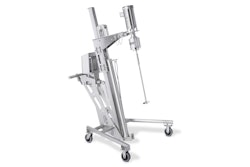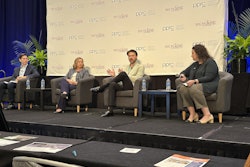
Gordon Moore was the co-founder of Intel, maker of the microprocessor chips that run much of our world. In 1965, Mr. Moore observed that the number of transistors on an integrated circuit chip had doubled about every year and he later predicted that this trend would continue with doubling about every 2 years. In 1970, this statement was named Moore´s Law and is often referred to in a corollary version to mean that processing capability doubles every 18 months due to both increases in the number of transistors on a chip and increases in their speed. Futurists realize that the size of the atom will place some ultimate limit on this law, but then go on to say that new developments not now understood will likely cause the law to continue for quite some time into the future. The law not only affects processing power but storage, displays, power electronics, etc.
I remember one evening in January of 1986, sitting in a pub in York, England with a gentleman who ran operations for the local Rowntree Mackintosh (now Nestle) chocolate factory. We were discussing the potential for technology to transform packaging machinery the way that it had transformed machine tools, using modular, digitally controlled motion. We concluded that the limitation was that there wasn´t enough affordable computing power available to operate machines that could complete a packaging cycle at the expected 600 to 1000 complete cycles per minute, and that we would have to be patient.
Enter Moore´s Law, and by the beginning of the 1990´s, that situation had changed. The first such machines, using steppers, showed up at InterPack that year and by 1993 servo machines had made their debut. The rest is history.
Now, with developments in power semiconductors and rare earth magnets some years behind us, Moore´s law has come to the rescue once again by enabling the computing and communications technology for a new class of linear servo motors that have shown up in machines on the floor of PackExpo 2012. By 2015, we should see some real progress with the potential for the future being every bit as great as it was for rotary servos in 1993.
Comments
Hi Keith, totally, as you would expect, agree. Who knows where the future lies? I think Lego design to the sub assembly level is just around the corner! I am now doing my own thing again so watch out for something really funky.
Best wishes. Rick.
Posted by: Rick Lidington on April 29, 2013
Moore's Law is alive and well -- we are seeing this as ARM processors get better but the need for PLC processors to do integrated control, plus HMI with video and animation and keep growing, still calls for the best new Intel stuff to keep ahead.
Posted by: John Kowal on April 29, 2013
Hi Keith
I have seen this effect as far back as the year 2000 in equipment solutions, however the effect has been increasing lore so in resent years. This will become a major problem for industry if ignored.
Regards
John McKeon
Posted by: John McKeon on April 30, 2013

























